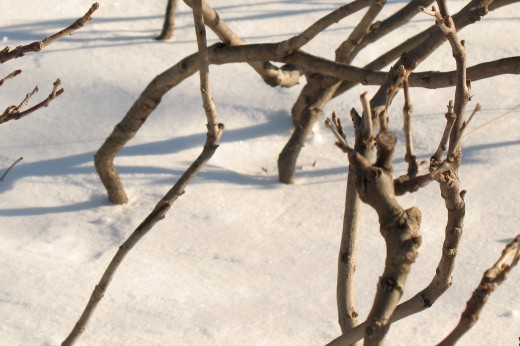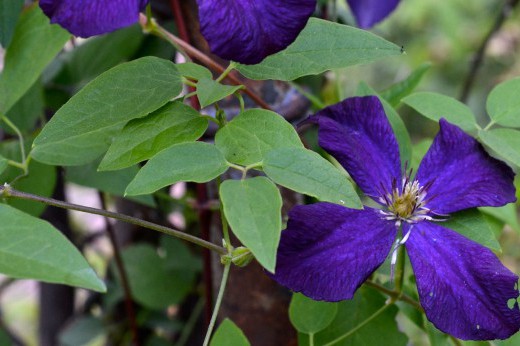Winter is here, the leaves have fallen, and you may have heard that it’s a good time to prune your woody plants. But what are the benefits of pruning in the winter? With search engine results on pruning surpassed only, perhaps, by the number of trees felled to print books on the subject, it’s easy for an aspiring pruner to feel lost in the woods, so to speak.
The first real advantage to pruning in the winter is the fact that most woody plants in NYC’s plant hardiness zone (7b) enter a period of dormancy. Not unlike bears that hibernate in the winter, our deciduous trees take a break from eating, growing, and trying to reproduce. Let’s say, for example, you want to eliminate some crossing and rubbing branches on a crape-myrtle (Lagerstroemia spp.). In spring or summer, cutting could unnecessarily stress the plant while it’s funneling energy into primary growth or flowering. It’s also important to consider that pruning cuts can stimulate new sprouts, which may not have time to harden off for the following winter if started too late in the season.
My favorite reason to prune deciduous trees in winter? They have dropped their leaves, and you can see what’s going on! With the plant’s architectural framework laid bare, there is joy in studying the wandering branches and sorting out where the wood has been headed over time. The route of a branch through the air tells the story of its pursuit of light, competition from its surroundings, and pruning done in the past. As Richard Powers writes in The Overstory, “There are more ways to branch than any cedar pencil will ever find.”
Another good reason to tackle this task in the chilly months: What else are you going to do in the garden? I’m half-joking, but home gardeners can take advantage of the lull in other tasks to focus on pruning.
Before you get started, it can be helpful to understand why we prune, period. The health of the plant, and the safety of people and property, are prime motivations. The “Four D’s” of pruning—dead, diseased, damaged, dangerous—are fairly self-explanatory reasons for a gardener to pick up a saw or secateurs. However, certain pruning techniques can also help prevent some of the “D’s” in your home garden. One approach, known as structural pruning, is employed to gradually guide a tree or shrub into a healthy, stable form. For example, depending on the species, you may prune to open up the center of the plant, improving light access and air circulation.
No matter the goal, it is important to remember that you are not dealing with an inanimate lump of clay that can be sculpted on your own timeline. A tree is a growing organism, reacting to biology and environment, as well as you and your blades.
If you’re preparing to tackle a winter pruning project, here are a few tips to keep in mind:
- It can be easy to get carried away, so stick to the “one-third” rule—cutting no more than about one-third of a shrub or small tree—as a guideline to prevent over-stressing the plant.
- Avoid pruning in wet conditions, as this provides an opening for disease and makes it more difficult to get clean cuts.
- Pick the right tool for the job. Rough rules of thumb: Bypass-type hand pruners for cuts up to ½″ diameter, larger loppers up to about 1-½″, and a manual tree saw beyond that.
- Always consider the age and species of the plant you are working with, as these factors often dictate strategy and technique. For example, most newly planted trees need several growing seasons to become established before they're ready for regular pruning.
- Read more! You’ll learn new terms and concepts like the “three-cut method,” a recommended procedure for pruning tree limbs, or “apical dominance,” the principle in which a shoot tip suppresses lateral bud growth. It may sound like a lot, but familiarizing yourself with the science of plant growth will help you master the art of pruning.
And be sure to stay on top of these basic safety practices:
- Don’t poke your eye out! Eye protection is always recommended.
- Finish with as many fingers as you started with. Work slowly and deliberately with clean, sharp tools (dirty tools spread plant disease, and dull blades are dangerous).
- Avoid cutting overhead or on ladders until you master the basics. Larger trees and work at significant heights require an ISA Certified Arborist.
For more in-depth resources, check out the Garden’s previous articles on why and when to prune, pruning for particular purposes, and pruning vines and climbing plants, as well as our Tree Care Primer. Stay warm, and happy pruning!



